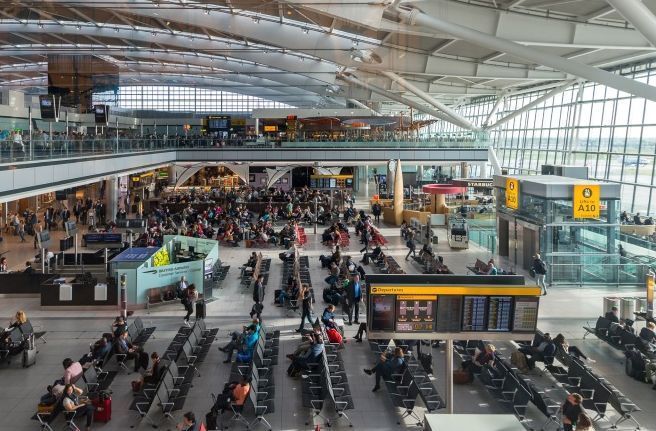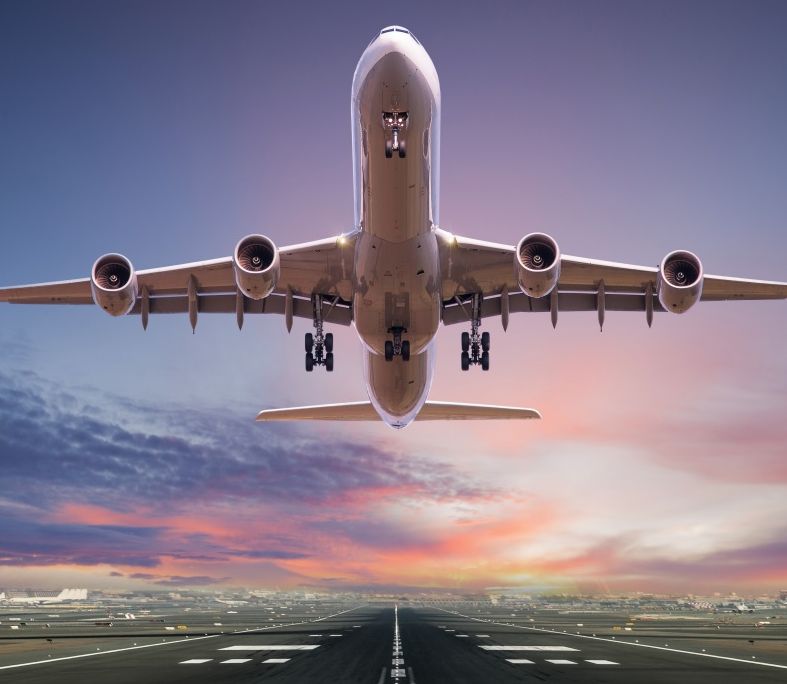Protocols for Airports and Airlines post-Covid-19 by WTTC

The WTTC recently unveiled a new global safety stamp (top right) to encourage safe travels and the reopening of the Travel & Tourism sector.
The World Travel & Tourism Council (WTTC) has released suggested protocols for airports and airlines to restart in the post Covid-19 world.
The protocols for the aviation industry are part of a series of proposed new measures by the WTTC, designed to rebuild confidence among consumers so they can travel safely once the restrictions are lifted. They are are aimed to provide consistency to destinations and countries as well as guidance to travel providers, airlines, airports, operators, and travellers, about the new approach to health and hygiene in the post COVID-19 world.
“Among the most important of these measures are those which will enable the aviation sector to take-off. Aviation’s return is critical to help repower the global economic recovery,” WTTC President & CEO Gloria Guevara said
The protocols relating to airports and airlines have been devised following close consultation with WTTC Members such as Iberia, Emirates Group, Etihad and Oman Aviation Group among others, as well as the International Air Transport Association (IATA) and Airports Council International (ACI), to rebuild trust and provide reassurance that airports and airlines will offer safe environments in which to fly once travel restrictions are relaxed.
“WTTC aviation protocols were created in close collaboration with ACI and IATA. We thank their leaders Angela Gittens and Alexandre de Juniac for their guidance, as it is vital we restore consumer confidence to get people travelling and flying safely,” Guevara added.
Airport protocols
Angela Gittens, ACI World Director General: “Our industry has been brought to a standstill. A balanced and effective restart and recovery of the global travel and tourism sector depends on collaboration among the key participants in this ecosystem and we welcome the ambitious approach taken by the WTTC.
“Collaboration will help to establishing a globally-consistent approach to recovery which will be the most effective way of balancing risk mitigation with the need to enable travel and foster economic recovery while also reassuring the travelling public that health and safety remain the overall priorities.”
- Enhanced cleaning including to self-service equipment, baggage trolleys, counters, buggies, security checkpoints, washrooms, elevators, handrails, boarding areas, and common areas with a specific focus on high-frequency touch points
- Provide personal protection equipment (PPE) to staff, such as masks
- New signage and announcements to limit interaction and queuing at touchpoints
- Possible pre-arrival health risk assessment to prevent delays upon arrival
- Reduce passenger touchpoints through online check-in before departure, use of self-check in kiosks and bag drop, home-printed bag tags, greater use of biometric e-gates and boarding card reading at gates
- If entry-exit screening is mandated, it should be carried out in a non-intrusive, walk through manner, through full body infrared scanners using handheld infrared thermometers, and ear gun thermometers
- Enhanced food safety and hygiene at restaurants, with prepacked foods to avoid handling of food at buffets
- Possible redesign of immigration halls together with governments and airlines to speed up procedures
- Where declarations are required upon arrival, electronic options should be used to minimise contact; ideally using contactless processes.
The WTTC’s detailed report on protocols for airports can be downloaded here:
Airports - Global Protocols for the New Normal
Airline protocols
Alexandre de Juniac, Director General and CEO at IATA: “COVID-19 is a gamechanger for the travel and tourism sector, requiring us to enhance our approach to health and safety to protect our travellers and workforce. Aviation is the business of freedom and it is vital to enable its restart on a safe basis. IATA is delighted to lend its framework and collaborate with WTTC on the Aviation Protocols as part of its Safe Travels initiative. This is an excellent example of the industry solidarity and cooperation that will be so vital to ensuring a strong recovery for travel and tourism.”
- Provide personal protection equipment (PPE) to staff such as masks
- Reduce passengers’ touchpoints through online check-in before departure, use of self-check in kiosks and bag drop, home-printed bag tags, greater use of biometric e-gates and boarding card reading at gates
- Provide approved hand sanitizers as appropriate based on high-traffic areas, such as check-in and boarding areas
- Revisited guidance for cleaning teams for all areas of the plane including washrooms, as well as check in and boarding areas, with a specific focus on high-frequency touch points
- Consider boarding from back of the plane to the front, window to aisle
- Limit movement in the cabin as much as possible
- Retrain crew and frontline staff regarding infection control and hygiene measures
The WTTC’s detailed report on protocols for airlines can be downloaded here:
Aviation - Global Protocols for the New Normal
Backed by the United Nations World Tourism Organization (UNWTO), the new protocols will recognise businesses and governments worldwide which have adopted them to rebuild confidence among consumers, encourage the return of ‘Safe Travels’ and enable the Travel & Tourism sector to reopen for business.
Drawn up by WTTC Members and based on the best available medical evidence and following guidelines from the World Health Organisation (WHO) and the Centre for Disease Control and Prevention (CDC), the new Safe Travels protocols avoid the emergence of multiple standards, which would only confuse the consumer and delay the sector’s recovery.







